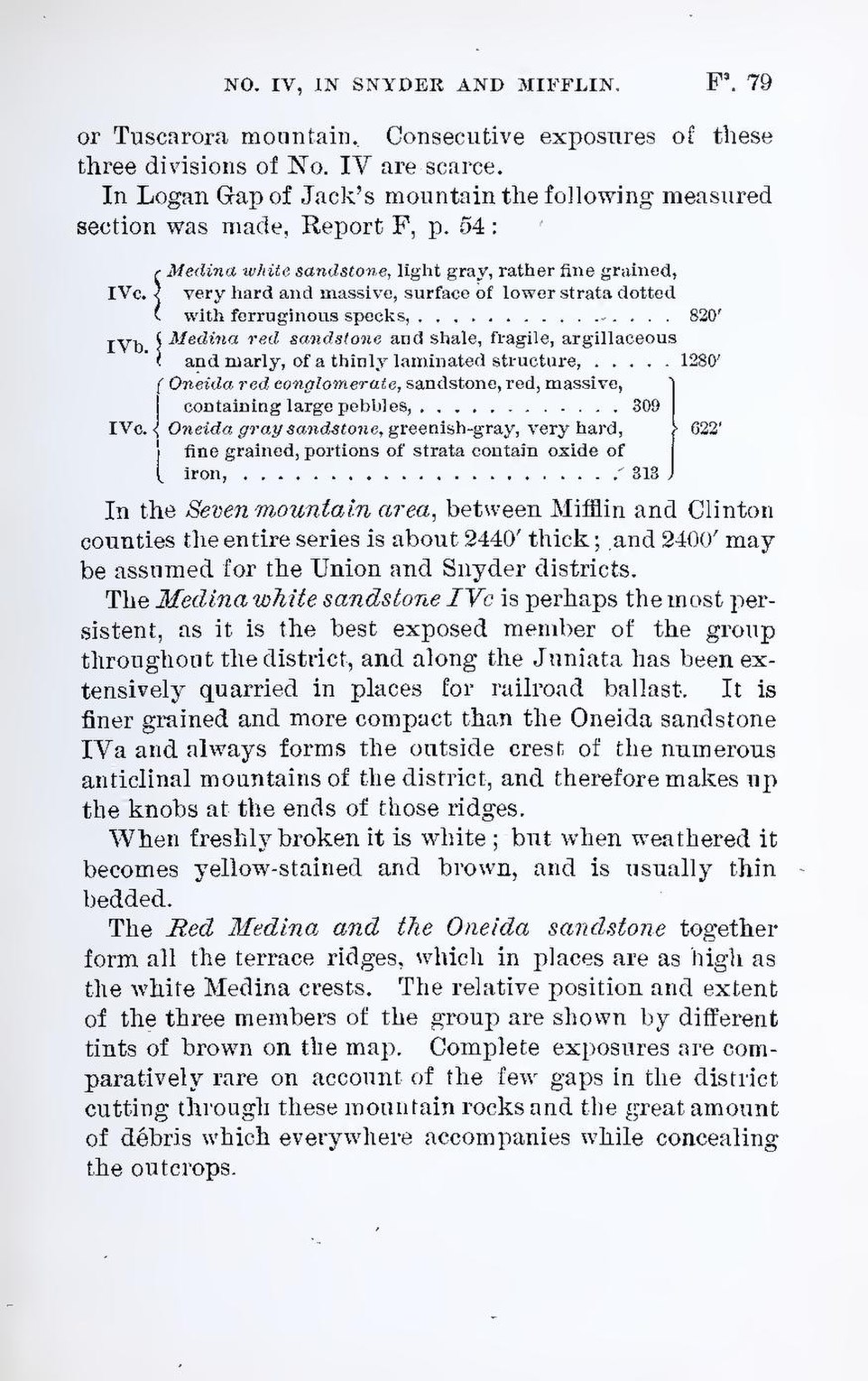or Tuscarora mountain. Consecutive exposures of these three divisions of No. IV are scarce.
In Logan Gap of Jack’s mountain the following measured section was made, Report F, p. 54:
| IVc. | Medina white sandstone, light gray, rather fine grained, very hard and massive, surface of lower strata dotted with ferruginous specks, |
820′ | |||
| IVb. | Medina red sandstone and shale, fragile, argillaceous and marly, of a thinly laminated structure, |
1280′ | |||
| IVc. | Oneida red conglomerate, sandstone, red, massive, containing large pebbles, |
309 | 622′ | ||
Oneida gray sandstone, greenish-gray, very hard, fine grained, portions of strata contain oxide of iron, |
313 | ||||
In the Seven mountain area, between Mifflin and Clinton counties the entire series is about 2440′ thick; and 2400′ may be assumed for the Union and Snyder districts.
The Medina white sandstone IVc is perhaps the most persistent, as it is the best exposed member of the group throughout the district, and along the Juniata has been extensively quarried in places for railroad ballast. It is finer grained and more compact than the Oneida sandstone IVa and always forms the outside crest of the numerous anticlinal mountains of the district, and therefore makes up the knobs at the ends of those ridges.
When freshly broken it is white; but when weathered it becomes yellow-stained and brown, and is usually thin bedded.
The Red Medina and the Oneida sandstone together form all the terrace ridges, which in places are as high as the white Medina crests. The relative position and extent of the three members of the group are shown by different tints of brown on the map. Complete exposures are comparatively rare on account of the few gaps in the district cutting through these mountain rocks and the great amount of débris which everywhere accompanies while concealing the outcrops.



